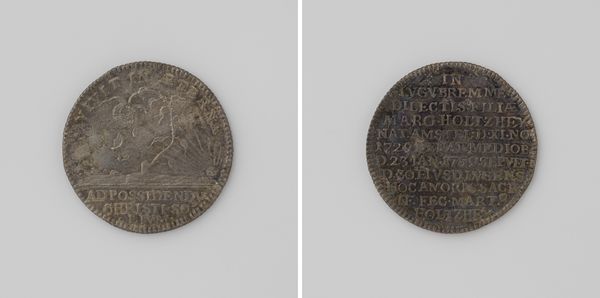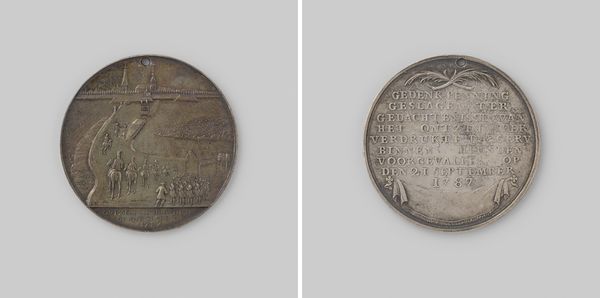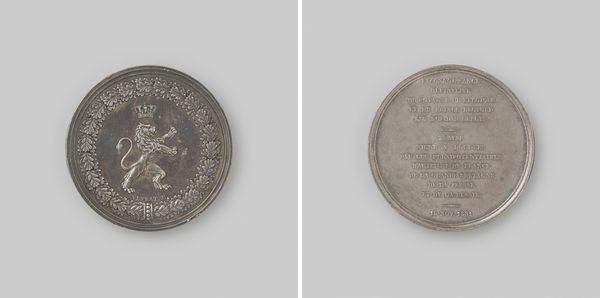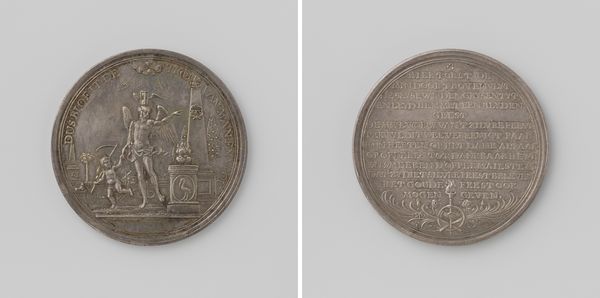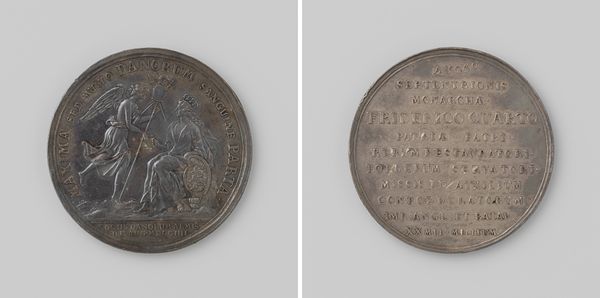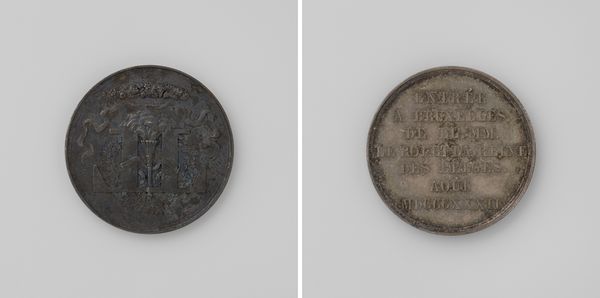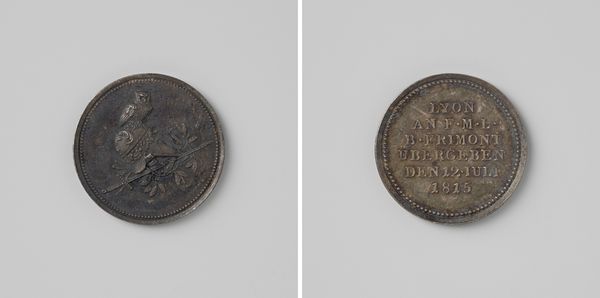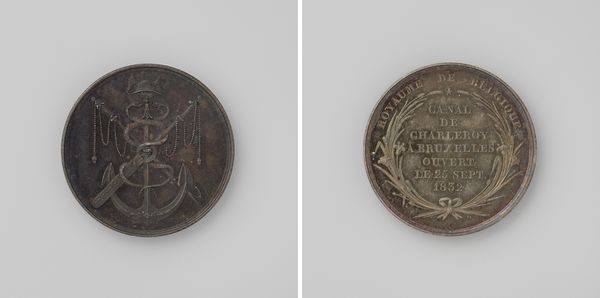
Voltooiing van het gevangenhuis te Gent, begonnen onder Maria Theresia 1826
0:00
0:00
print, metal, engraving
#
neoclacissism
# print
#
metal
#
cityscape
#
history-painting
#
engraving
Dimensions: diameter 3.3 cm, weight 12.86 gr
Copyright: Rijks Museum: Open Domain
Curator: This striking engraving from 1826 by Joseph-Pierre Braemt captures the "Completion of the prison in Ghent, begun under Maria Theresa." My initial thought is of functionality made monumental, perhaps attempting to impart an image of civic progress? Editor: The severe geometries do give it that sense. Look at the materials, though. It's a print, impressed onto a metal token or medal, likely using an engraving process. What's the story behind the construction of this Ghent prison that warrants such a commemorative object? Curator: Well, construction began under Maria Theresa, illustrating its roots in the enlightened reform movements of the late 18th century, aiming for a more humane and rational system of incarceration. Braemt's engraving, however, comes much later, marking the completion of the project decades after its inception, under a different political regime. It speaks to the long, complex timeline of implementing these large-scale social reforms, and how such projects become intertwined with evolving power structures. Editor: Interesting how the history painting theme is transferred onto this very object; the imagery is fascinating, but how was the token itself, as an object, intended to be used, exchanged, and distributed? Its value resided perhaps not in its metal content but rather in its capacity to circulate a particular narrative about governance. Curator: Exactly. Consider the broader context, too. The creation and distribution of such commemorative items served to solidify and broadcast the legitimacy and benevolence of the ruling authorities. The prison itself becomes a symbol—a tangible manifestation of justice and order as envisioned by those in power. The act of creating and circulating this image, therefore, underscores the complex interplay between art, politics, and the shaping of public opinion. Editor: Yes, but also it invites us to think about those less celebratory perspectives. To produce these images on a material scale necessitates labor, the mines from which the metal was sourced. There is an entire industrial element—an economy of production, reproduction, and exchange. Curator: It definitely encourages reflection. The creation of art is rarely divorced from societal ambitions and historical circumstances, so I do agree, looking closely really unveils the many interwoven elements present. Editor: Indeed, that prison went up as a mark of governance, an assertion materialized and pressed in metal for posterity. And the means used to circulate its image further embedded it within webs of societal function and messaging.
Comments
No comments
Be the first to comment and join the conversation on the ultimate creative platform.
